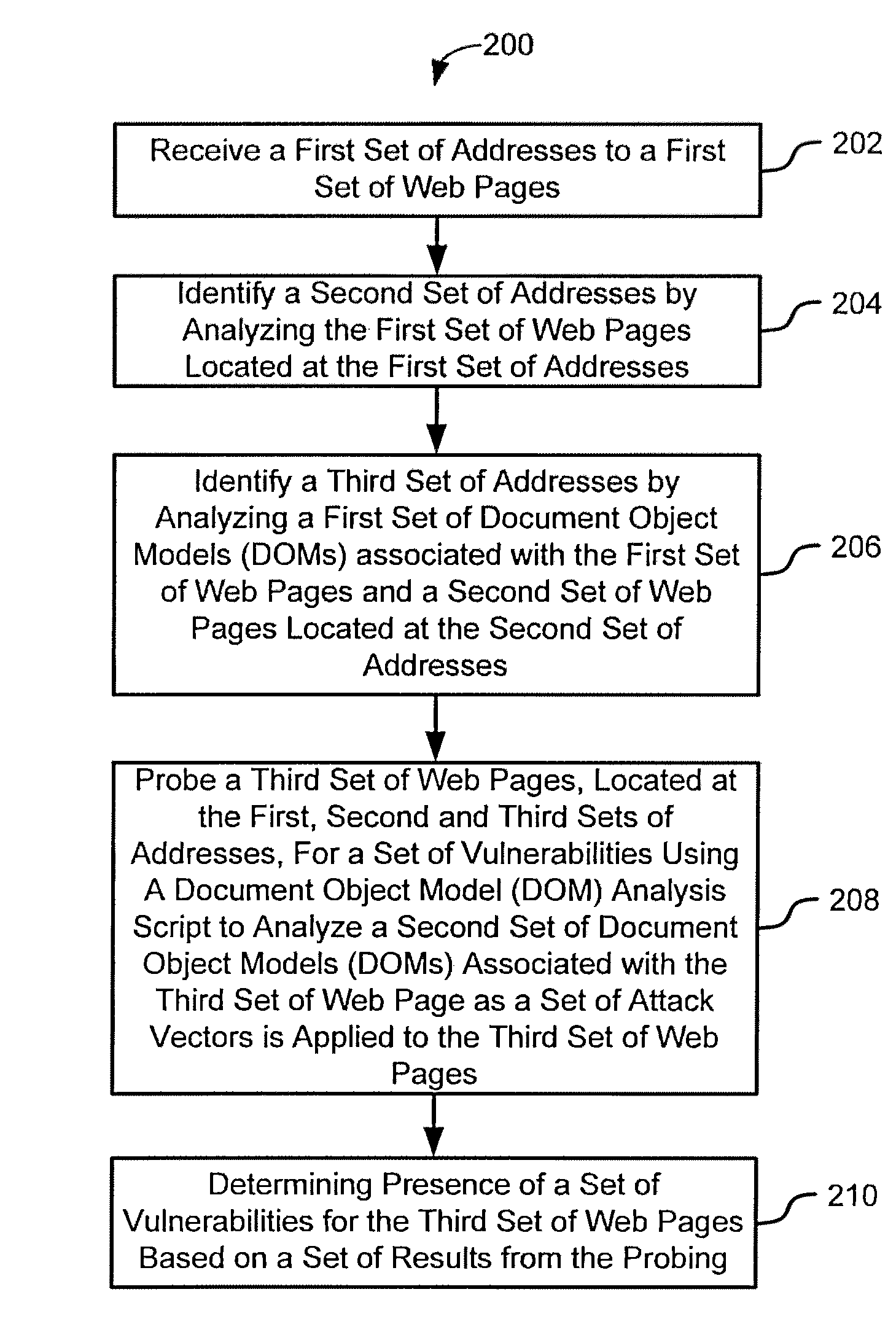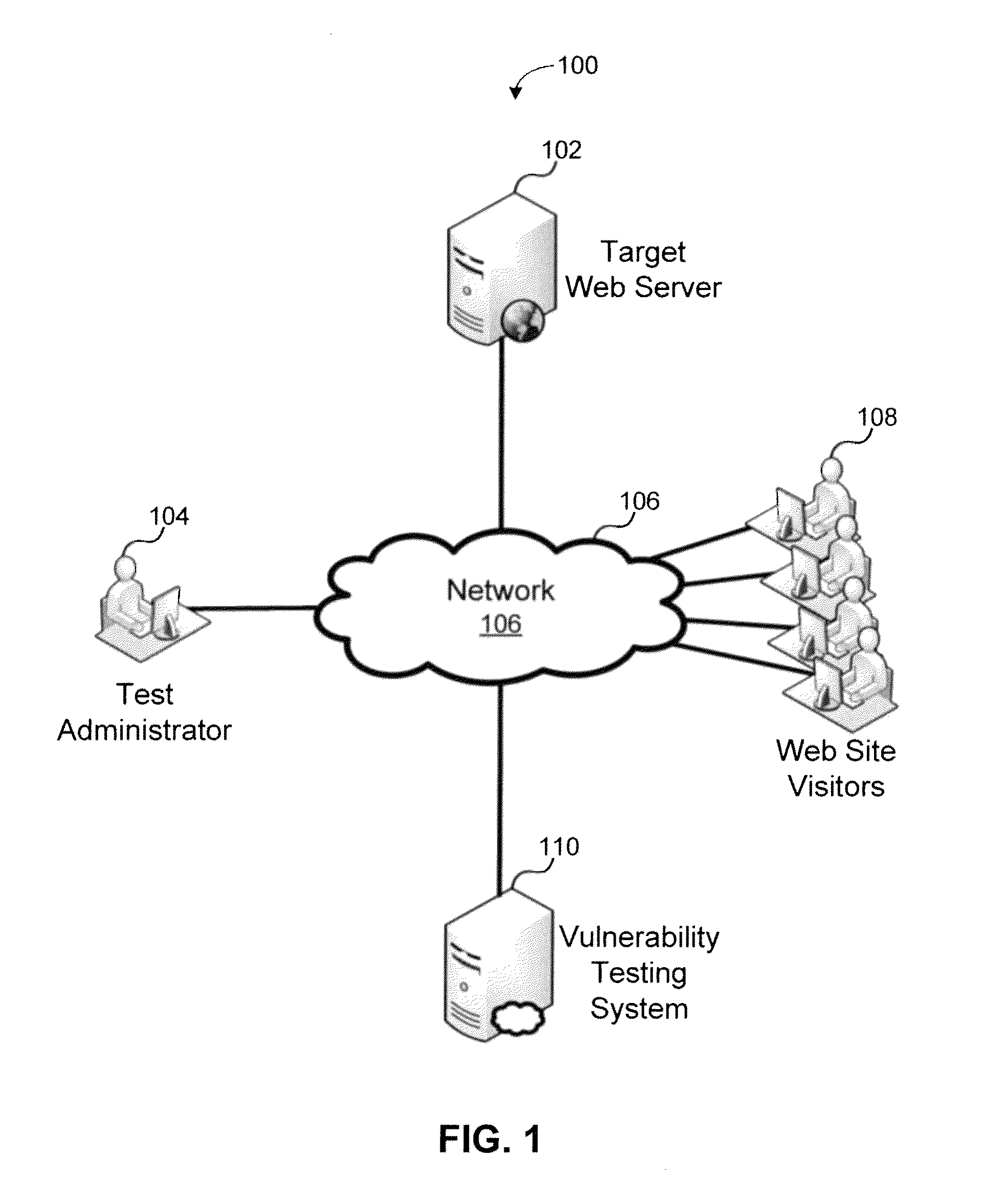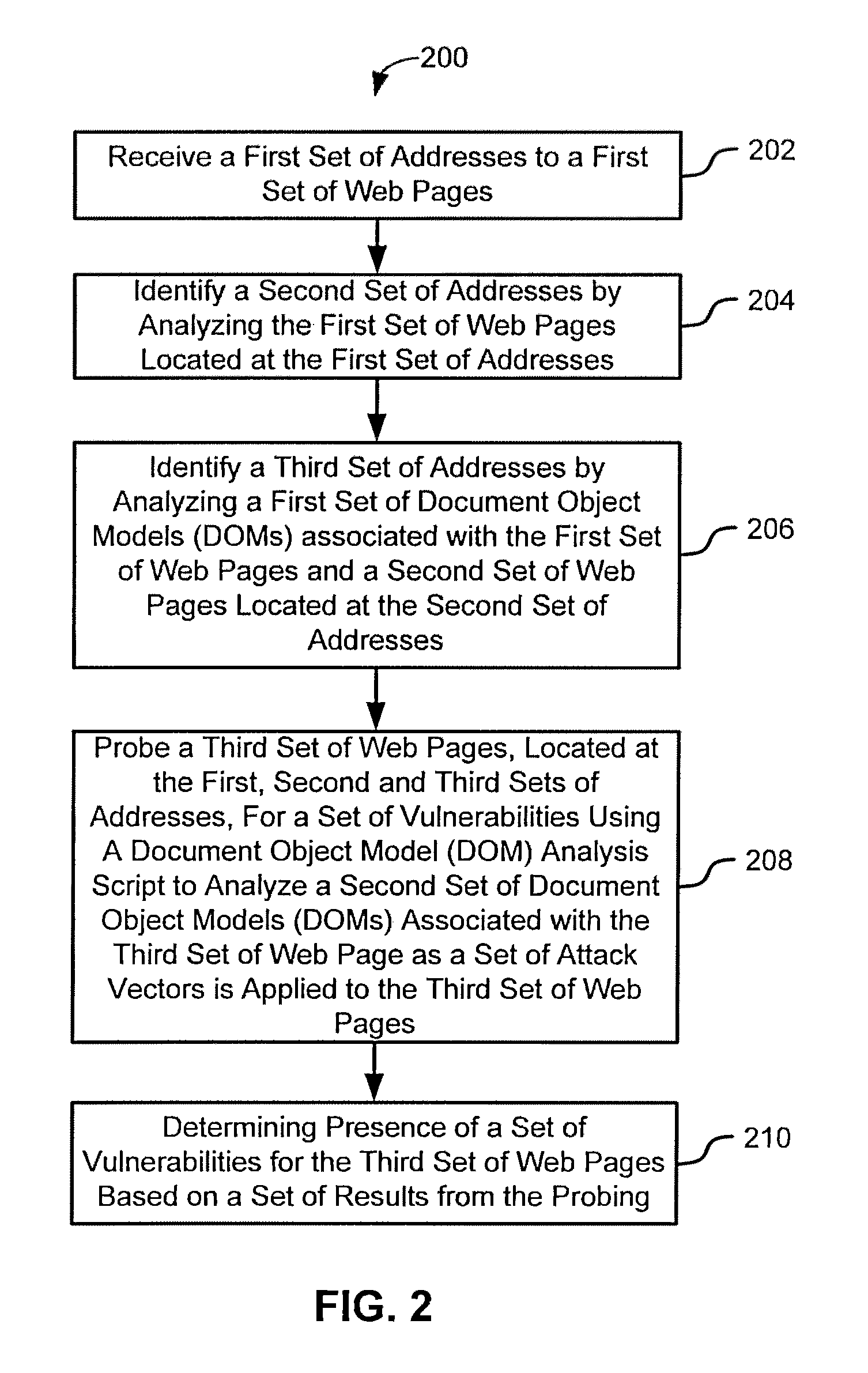Systems and methods for client-side vulnerability scanning and detection
a vulnerability detection and client-side technology, applied in the field of crawling web sites, can solve problems such as user detriment, domxss can affect complex and user-driven event models of web pages, and ordinary client-side scripts and various web page elements to behave differently and unexpectedly, and achieve excellent accuracy and breadth of coverage. , to facilitate the opening of web pages
- Summary
- Abstract
- Description
- Claims
- Application Information
AI Technical Summary
Benefits of technology
Problems solved by technology
Method used
Image
Examples
Embodiment Construction
[0008]Various embodiments provide systems and methods for scanning and detecting vulnerabilities of a web page (e.g., of a web site) by way of analyzing a document object model (DOM) associated with the web page and from the perspective of a client web browser.
[0009]According to some embodiments, a method for testing a vulnerability of a web site is provided, comprising: receiving a first set of addresses; identifying a second set of addresses by analyzing a first set of web pages located at the first set of addresses; and identifying a third set of addresses by analyzing a first set of document object models (DOMs) associated with the first set of web pages and associated with a second set of web pages located at the second set of addresses. The method may also comprise probing a third set of web pages for presence of a set of vulnerabilities using a document object model (DOM) analysis script to analyze a second set of document object models (DOMs) associated with the third set of...
PUM
 Login to View More
Login to View More Abstract
Description
Claims
Application Information
 Login to View More
Login to View More - R&D
- Intellectual Property
- Life Sciences
- Materials
- Tech Scout
- Unparalleled Data Quality
- Higher Quality Content
- 60% Fewer Hallucinations
Browse by: Latest US Patents, China's latest patents, Technical Efficacy Thesaurus, Application Domain, Technology Topic, Popular Technical Reports.
© 2025 PatSnap. All rights reserved.Legal|Privacy policy|Modern Slavery Act Transparency Statement|Sitemap|About US| Contact US: help@patsnap.com



